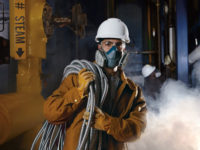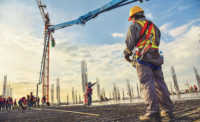Americans are living longer and working longer, resulting in an unprecedented transfor-mation of the workplace, according to the United States Senate’s Special Committee on Aging.
The number of Americans over age 55 in the labor force is projected to increase from 35.7 million to 42.1 million from 2016 to 2026, and, by 2026 aging workers will make up nearly a quarter of the labor force1. Every day 10,000 Baby Boomers turn 65, a trend that started in 2011 and will continue till 20302.
Challenges facing older workers
Challenges confront an older workforce include poorly designed workplaces, inadequate training opportunities, deteriorating health conditions, and balancing caregiving responsibilities. Generally, older workers experience physical and cognitive changes that accompany aging. Older workers also have more severe injuries compared to younger workers and take longer to heal.
Many workplace injuries develop over time, as a result of doing the same activity over and over again, such as repetitive motion injuries. An older worker may report more musculo-skeletal disorders (MSD) since they’ve worked a longer time. According to US Bureau of Labor Studies, aging workers are 19.8 percent more prone to MSDs as compares to other workers3.
Older workers in certain industries like manufacturing, construction, warehousing and lo-gistics have to be on their feet for long hours each workday, standing and/or walking on hard surfaces such as cement and concrete. Often mandatory footwear requirements like heavy steel-toe or ESD boots exist. This makes workers even more susceptible to MSDs due to repeti-tive motion, over-exertion, and slips, trips and falls.
Accommodating the aging process
An ergonomic workplace that matches the tasks and workstation to the individual employee’s needs benefits all workers. A few ideas on how to accommodate an aging workforce:
- Meet the requirements and comfort levels of older workers by adjusting the office environment including lighting, heat and ergonomics.
- Offer flexibility in work arrangements such as part-time work, flexible hours and work from home to help workers better balance schedules at home and work.
- Consider the physical capabilities and limitations of the worker before assigning workstations/tasks help workers get work they are physically suited for.
- Provide ergonomically designed PPE such as anti-fatigue insoles to help support and protect older workers from overexertion and slips, trips and falls.
- Implement an anti-fatigue insole program to offer immediate benefits. This provides support to the user even outside the facility.
- Offer training on maintaining health and practical advice on avoiding injuries.
The body’s foundation
Among the different components of PPE, foot protection is one of the most important to consider. Feet are the foundation of the body and carrying the entire load of the body. Foot protection includes anti-fatigue solutions such as insoles, footwear and traction devices.
Anti-fatigue factors
Many factors must be considered before choosing anti-fatigue solutions that match indi-vidual needs yet conform to company standards.
- Comfort: Footwear and insoles that are ergonomically designed provide superior comfort to the user.
- Material: Memory Foam insoles offer extra support, which works well for all workers. In-soles offering dual layer memory foam to provide greater comfort and protection to the user.
- Research: It is essential to consider reviews and look at research/testing. Look at insoles that are proven and tested to reduce pain and muscle fatigue.
- Breathability: Aeration holes in insoles help improve air circulation and temperature control. Some insoles have a top cloth that provides anti-microbial and anti-perspiration properties.
- Proper fit: Foot size and arch type may change with age; hence it is essential to get workers’ feet measured and buy only proper sized footwear and insoles. Certain insoles can be trimmed to match the shoe for a perfect fit.
Don’t ignore the comfort factor
Organizations sometimes face unique challenges in terms of decision making and implementation of anti-fatigue solutions. Occasionally the key decision makers in organizations are not aware of the workers’ requirements. This may be because older workers might feel the need to downplay their physical discomfort, but if there are workers with back supports and knee braces in the facility, anti-fatigue solutions are a must. Some older workers might be resistant to change; they see PPE implementation as an additional job. Regardless of the worker’s age, if it’s not comfortable, they will not wear it.
Decision-makers need to take a hard look at their facility, workstation and injury numbers to evaluate the need for anti-fatigue insole solutions. Older workers need to be offered more time to adapt to new solutions. Get buy-in from workers by involving them in the design, selection and purchase process. A look at injury costs will help put the cost of anti-fatigue insoles into perspective.
Implementing an anti-fatigue insole program helps employees and employers alike. Among anti-fatigue solutions, proven and tested dual-layer memory foam insoles with an ergonomic design would be a good bet. If employers keep a flexible mind and formulate policies that take into account the needs of the workforce, they will continue to reap benefits for years.
References
- https://www.shrm.org/resourcesandtools/hr-topics/behavioral-competencies/global-and-cultural-effectiveness/pages/4-ways-for-hr-to-overcome-aging-workforce-issues.aspx
- https://www.bls.gov/news.release/osh2.htm
- https://nupge.ca/content/challenges-aging-workforce



